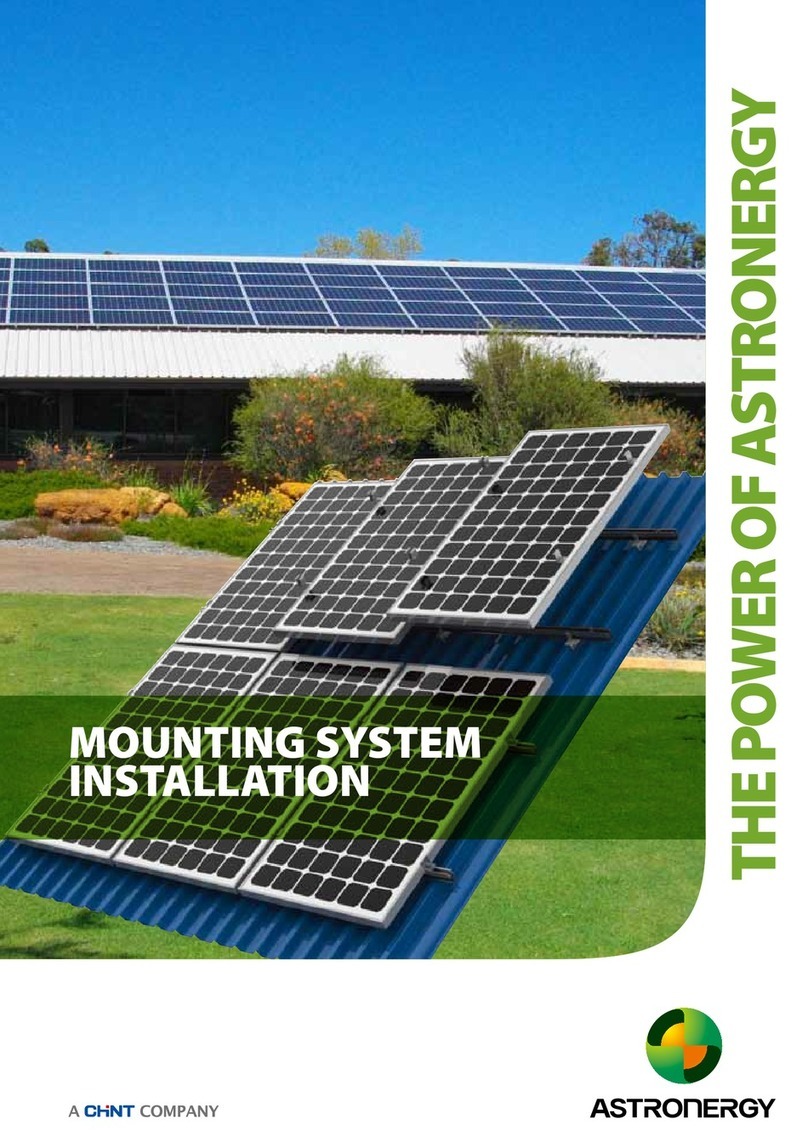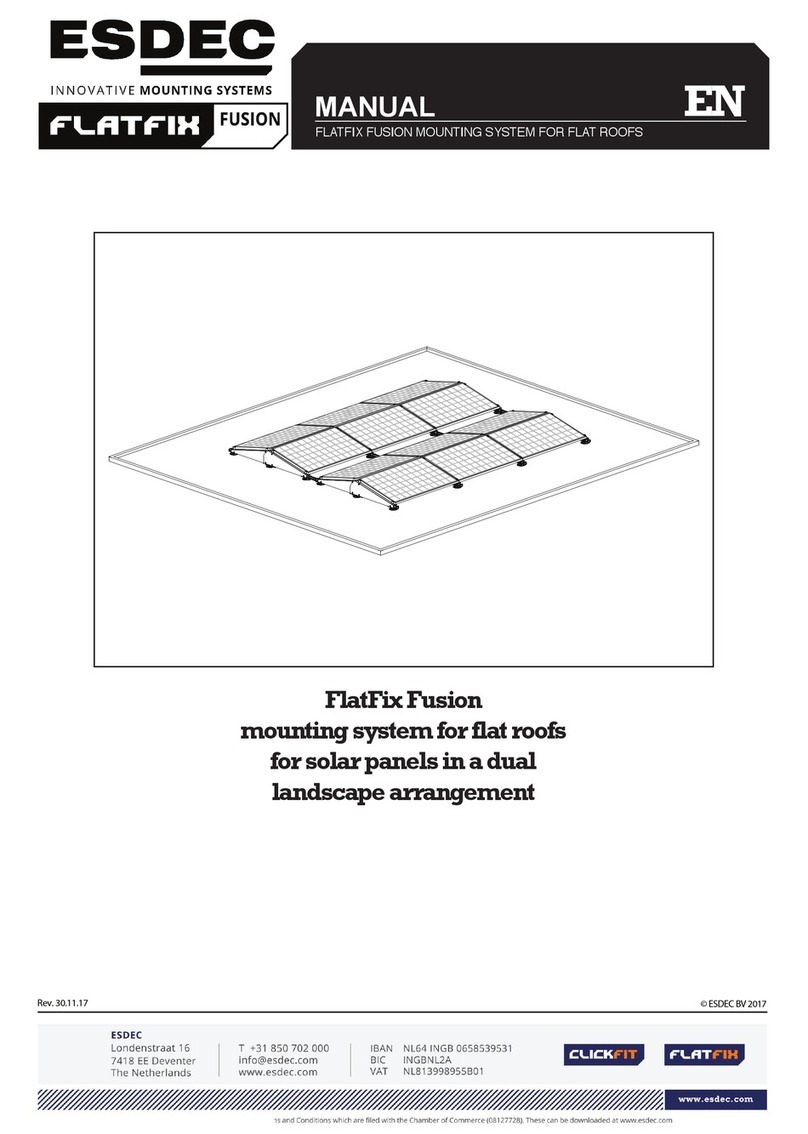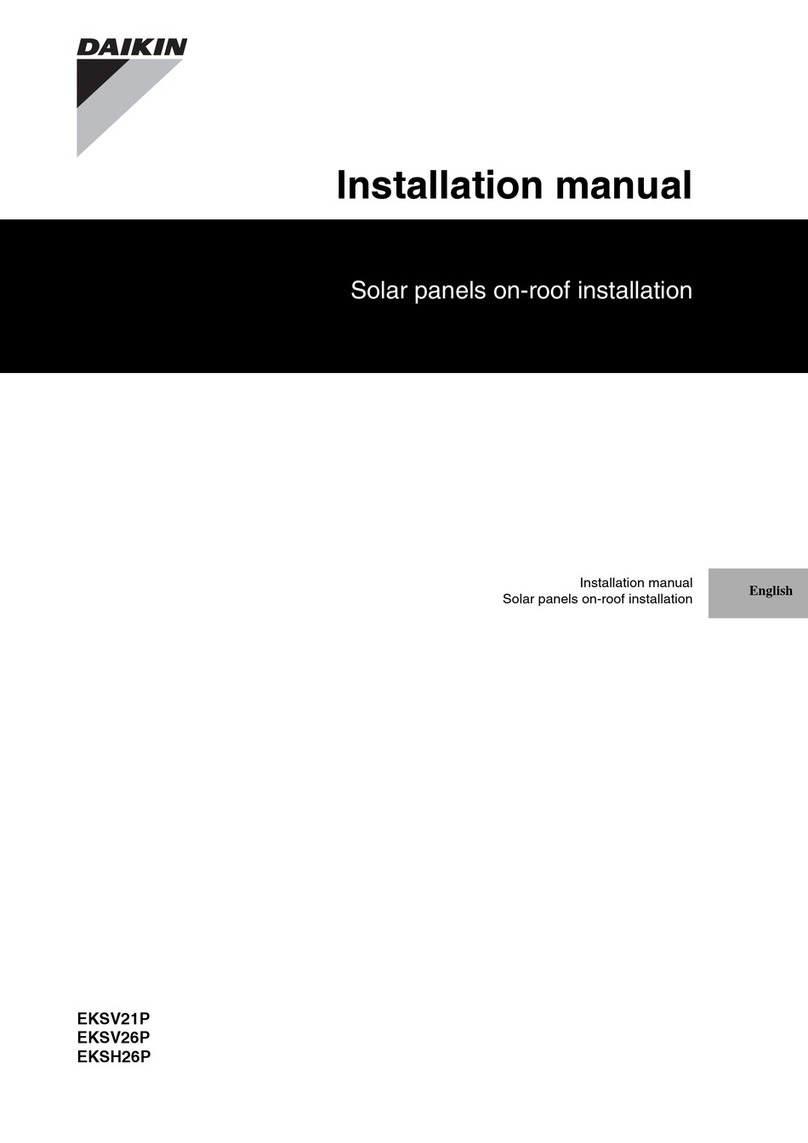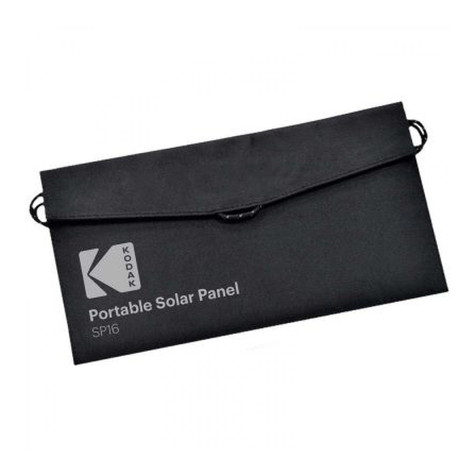CHINT ASTRONERGY CHSM5409M User manual

THE POWER OF ASTRONERGY
CRYSTALLINE SILICON PV MODULE
INSTALLATION GUIDE

2
CRYSTALLINE SILICON PV MODULE
INSTALLATION GUIDE
1. Introduction
2. Safety
3. Mechanical Installation
4. Electrical Installation
5. Maintenance and Disposal
1.1 Purpose
1.2 Limitation of Liability
2.1 General Safety
2.2 Installation Safety
3.1 Installation Condition
3.2 Installation Methods
4.1 Installation Condition
4.2 Grounding

3
1. Introduction
1.1 Purpose
This document provides detailed instructions and valuable safety information regarding the installation, electrical connection,
and maintenance of the following ASTRONERGY Crystalline Photovoltaic modules:
CHSM5409M CHSM5612M CHSM5612M (BL) CHSM5612M (FR)
CHSM6608M CHSM6610M CHSM6610M (BL) CHSM6610M (FR)
CHSM6610P CHSM6612P CHSM6610P (BL) CHSM6610P (BF)
CHSM6610P (FR)
All instructions and mechanical and electrical requirements should be read and understood before attempting installation.
The installer should conform to all safety precautions in this guide when installing the module. Keep this guide in a safe place
for further reference.
1.2 Limitation of Liability
Because the use of this manual and the conditions or methods of installation, operation, use and maintenance of photovoltaic
(PV) products are beyond Astronergy’s control, Astronergy does not accept responsibility and expressly disclaims liability
for loss, damage, or expense arising out of or in any way connected with such installation, operation, use or maintenance.
Astronergy reserves the right to change the manual without prior notice.
2. Safety
2.1 General Safety
2.1.1 Consult and follow local codes and other applicable laws concerning required permitting as well as installation &
inspection requirements, rules, and regulations.
2.1.2 PV modules should be installed and maintained by qualied personnel.
2.1.3 Use the same performance modules within a given series.
2.1.4 Follow all safety precautions of all components used in the system.
2.1.5 Do not shade portions of the PV module surface from the sun for a long period of time. The shaded cell may become
hot (hot spot phenomenon), which can result in solder joints peeling o.
2.1.6 Do not clean the glass surface with chemicals.
2.1.7 Do not drop the PV module or drop objects onto the PV module.
2.1.8 Do not concentrate sunlight on the modules or panels.
2.1.9 Do not attempt to disassemble the modules, and do not remove any attached components from the modules.
2.1.10 Do not scratch or hit at the back sheet, the glass, the terminal box. Do not pull the cables or touch them with
bare hands.
2.1.11 Do not drill holes in the frame or scratch the insulating coating of the frame.

4
2.1.12 Keep the PV module packed in the carton until installation.
2.1.13 Do not use modules near equipment or in places where ammable gases may be generated.
2.2 Installation Safety
2.2.1 Wear protective head gear, insulating gloves, safety shoes, and insulated tools when installing the modules.
2.2.2 Do not install the modules in rain, snow, or otherwise wet or windy conditions.
2.2.3 Completely cover the PV module surface with an opaque material during PV module installation and wiring to
prevent accidental charge buildup.
2.2.4 Plug in connectors tightly when working on wiring.
2.2.5 Due to the risk of electrical shock, do not perform any work if the terminals of PV module are wet.
2.2.6 Do not touch the terminal box and the end of output cables (connectors) with bare hands.
2.2.7 Do not unplug the connector under load.
2.2.8 Do not work alone.
2.2.9 Wear a safety belt if working far above the ground.
2.2.10 Do not wear metallic jewelry, which can cause electric shock, while installing or troubleshooting the PV system.
2.2.11 Follow the safety regulations for any and all other system components, including wires, connectors, charging
regulators, batteries, inverters, etc.
2.2.12 Do not expose wires to direct sunlight. Use UV-resistant cabling.
2.2.13 Do not damage the surrounding PV modules or mounting structure when replacing a PV module.
2.2.14 Do not change any PV module components (diode, junction box, plug connectors, etc.).
2.2.15 Maximum reverse current is 13.5A for module with 5 inch cells and 20.25A for module with 6 inch cells. Use a blocking
diode and fuse in the combiner box are recommended for reverse current protection when more than three strings
are connected in parallel.
2.2.16 The solar modules are recommended to be installed over a reproof and insulating roof covering when installed on a
roof.
3. Mechanical Installation
3.1 Installation Conditions
3.1.1 Environment temperature: -40 to 85 °C
3.1.2 Operating temperature: -40 to 85 °C
3.1.3 Mechanical load on panels (e.g., from wind or snow): less than 5400 Pa
3.1.4 Tilt Angle selection: The installation should be facing north in the southern hemisphere and facing south in the
northern hemisphere.
3.1.5 To maintain the modules’ Class C re rating, the re class of the roof and building materials should higher than Class C.
3.2 Installation Methods
3.2.1 Bolting
All modules must be securely fastened with at least 4 bolts (Fig. (a) and (b)). For maximum security against strong
winds or heavy snow falls, suggestion for all of the mounting holes should be used.

5
Especially, this mounting method isn’t suitable for the 45mm frame thickness of CHSM6612P and 35mm frame thickness of
CHSM6610P product series.
Remark: As for above diagram, the solid red arrows indicate primary bolt positions; dashed blue arrows indicate positions where bolts can be added
for additional support.
Bolts are inserted as described in the process below (Fig. (c) ).
1. Place the module on the supporting bars underneath.
2. Insert four stainless-steel bolts (M6) through the holes (7x11.5mm) in the frame according tothe Fig. (a) & (b). For maximum
security against strong winds and heavy snow, all available mounting holes should be used.
3. Secure each bolt to the frame with 2 stainless-steel washers, one on each side of the mounting structure; and screw on
either a stainless-steel spring washer or a toothed lock washer. Finally, secure with a stainless steel nut (M6).
4. The torque for tightening the nut and bolts recommended 13Nm when the property class of bolts and screws is Class 8.8.
3.2.2 Clamping
Modules can be laid either across the supporting bars (Fig. (d) ) or parallel to them (Fig. (e) & (f) ).
(a) (b)
(d) (e)
(c)
Module Frame
M6 Bolt
Washer
Washer
M6 Nut
Spring Washer
Mounting Structure

6
Remark: Illustrations of the three dierent methods for clamping modules onto the frame with aluminum clamps.
Each aluminum mounting clamp comes with an M8 bolt, a plain washer, a spring washer, and an M8 nut. To fasten the module:
1. Place the module on the two supporting bars (not provided). The bars should be made with stainless material or
treated with an anti-corrosion process (e.g., anodic oxidation treatment).
2. The bar’s top surface contacted with module frame should come with grooves compatible with an M8 bolt.
3. If the bars do not come with grooves, holes of a suitable diameter may need to be drilled to allow bolts to be attached to
the bars at the same locations as mentioned before.
4. Secure each clamp by attaching plain washer, spring washer, and nut, in that order.
5. Both of close-ups of Fig. (g) indicate the middle clamps and Fig. (h) indicate the side clamps for your reference. The
dimensions for the middle clamps are a ≥ 40 mm, b ≥ 26 mm, c = 8 mm, d ≥ 28 mm, and Ø = 9 mm. The torque for
tightening the nut and bolts recommended 28Nm when the property class of bolts and screws is Class 8.8.
6. Especially for Fig. (d) mounting method, slide bolts through groove on the supporting bars next to the locations where
the 4 clamps are to be fastened. The module may be clamped only in the permitted clamping are as on the long edge of
the frame. For exact locations on the frame refer to Fig. (i) in conjunction with table 1 below.
(f)
(h )
(g)

7
For exact dimensions for a given module series, please see the following table 1. Use in conjunction with Fig. (i) to determine permitted clamping
locations for a given module series for clamping with clamps:
Module Series Dimension A B C
CHSM5409M 1200*554*35 1200 50 250
CHSM5612M /(BL) 1580*808*35 1580 200 200
CHSM5612M (FR) 1580*808*35 1580 200 200
CHSM6610P / (FR) 1652*994*35 1652 200 210
CHSM6608M 1336*994*40 1336 50 280
CHSM6610M / (BL) 1652*994*40 1652 50 360
CHSM6610P/ (BL) / (BF) 1652*994*40 1652 50 360
CHSM6610P (FR) 1652*994*40 1652 50 360
CHSM5612M 1580*808*45 1580 50 350
CHSM6610M 1652*994*45 1652 50 360
CHSM6610P 1652*994*45 1652 50 360
CHSM6612P 1956*994*45 1956 480 20
CHSM6612P 1956*994*50 1956 60 440
Variable clamping range
(i)

8
7. Especially for Fig. (e) mounting method, the modules may be mounted using clamps designed for solar modules refer to
Fig. (j), the modules must be supported along the length of the long edge, and should overlap the array rail by
10mm – 14mm
8. Especially for Fig. (f) mounting method which is not suitable for 35mm frame thickness of CHSM6610P and 45mm frame
thickness of CHSM6612P product series, clamp positions are important – the clamp centerlines refer to mark “D”which
must be between 50mm and 200mm from the end of the module.
4. Electrical Installation and Grounding
4.1 Installation
4.1.1 The electrical characteristics are within ±10 percent of the indicated values of Isc. Voc and Pmp under test conditions
(irradiance of 100mW/cm²,AM1.5 spectrum, and a cell temperature of 25°C).
4.1.2 The maximum system voltage for all module series is 1000 V for North American Market and 1000V for European
Market.
4.1.3 Connect quantity of modules that match the voltage specications of the inverters used in system. Modules must
not be connected together to create a voltage higher than the permitted maximum system voltage under the worst
local temperature conditions.
4.1.4 Under normal conditions, a photovoltaic module is likely to experience conditions that produce more current and/
or voltage than reported at standard test conditions. Accordingly, the values of Isc and Voc marked on this module
should be multiplied by a factor of 1.25 when determining component voltage ratings, conductor ampacities, fuse
sizes, and size of controls connected to the PV output.
4.1.5 Refer to Section 690-8 of the National Electrical Code for an additional multiplying factor of 125 percent (80 percent
derating) which may be applicable.
4.1.6 Each module (or series-connected string of modules) shall be provided with the maximum series fuse, specied as 10
A for the 5 inch cell module series and 15A for the 6 inch cell module series.
4.1.7 Use a special solar cable and plugs for installing the PV system and make sure that all connections are safe and tight.
The cable should be 4 mm2 (12AWG), and able to withstand the maximum possible system open-circuit voltage.
4.1.8 Bypass diodes are included in module junction boxes to avoid decreased module performance in the event of shade
or shelter. Please check the relevant product datasheet for the specic diodes of J-box.
(j)

9
4.2 Grounding
Grounding the aluminum frame with copper wire
4.2.1 Use the marked 5.5 mm grounding holes (5.5mm) to ground the anodized frame. Use an M5 nut, two M5 cut washers,
an M5 plain washer, an M5 spring washer, and an M5 bolt and a copper wire. All nuts, bolts, and washers are type M5
and should be made of stainless steel (Fig. (k)).
4.2.2 Put the bolt through the cup washer and wrap the copper wire around the bolt. (Note that the copper wire cannot be
attached directly to the aluminum.)
4.2.3 Put the bolt through the cut washer and then through the hole in the aluminum frame.
4.2.4 Add the spring washer and nut on the other side of the bolt and tighten to secure all parts. The tightening torque
should be 210±20 N•cm.
4.2.5 Approve the use of UL-467 approved bonding and grounding devices, including Burndy (formerly Wiley Electronics)
Washer Electrical Equipment Bonding (WEEB) and similar devices, such as barbed washers, that meet the
requirements of UL-467 as suitable for electrical bonding and grounding PV modules to PV mounting systems.
5. Maintenance
5.1 Regularly carry out a visual inspection for dirt, dust, bird dropping, leaves, and other detritus covering the modules.
5.2 If there is a build-up of dirt or dust on the module surface, wash the module with clean water and a gentle implement
(a sponge). Never use chemicals on the surface of the module.
5.3 If snow is present, a soft-bristled brush with soft bristles may be used to clean the surface of the modules.
5.4 Regular electrical and mechanical inspection by a licensed professional will keep the system safe and operating at
maximum eciency.
(k)
Stainless steel M5 bolt
Stainless steel M5 nut
Stainless steel spring washer
Stainless steel cut washer
Stainless steel plain washer
Copper wire
Stainless steel M5 cup washer
Stainless steel M5 bolt

©1015 P / 08 - 2013
http://www.astronergy.com
SHANGHAI, CHINA
HANGZHOU, CHINA
SEOUL,
KOREA
TOKYO,
JAPAN
BANGKOK,
THAILAND
BARCELONA,
SPAIN
SAN FRANCISCO,
USA
RAVENSBURG,
GERMANY
SUBSIDIARIES
Spain
Chint Solar Hispania S.L.
Paseo de Gracia, 78, 2-2A
08008 Barcelona,
Spain
Tel: + 34 9346 73778
Fax: + 34 9346 73789
Germany
Astronergy GmbH
Karlstr. 8
88212 Ravensburg,
Germany
Tel: + 49 (0)751 295096-10
Fax: + 49 (0)751 295096-39
North America
Astronergy Solar, Inc.
Suite 1125, 795 Folsom Street,
San Francisco, CA 94107
USA
Tel: +1 650 392 2777
Japan
KoyoAstro Co., Ltd.
1-5-6, Higashi-Nihonbashi, Chuo-ku,
Tokyo 103-0004,
Japan
Tel: + 03 5820 2141
Fax: + 03 5820 2142
Korea
Astronergy Solar Korea
5th FL. Cowell Bldg, 66-1,
Banpo-Dong, Seocho-Gu,
Korea
Tel: + 82 (0)2 2226 3911
Fax: + 82 (0)2 2226 3910
Thailand
Astronergy Solar Thailand Co., Ltd.
184/88 Forum Tower 18FL
Ratchadapisek Rd., Huay-Kwang,
Bangkok 10320
Thailand
Tel: + 662 645 4155
Fax: + 662 245 3185
CORPORATE HEADQUARTERS
Chint Solar (ZheJiang) Co., Ltd.
1335 Bin’an Road, Binjiang District
Hangzhou, Zhejiang Province, 310053
China
Tel: + 86 571 5603 1888
Fax: + 86 571 5603 2383
MANUFACTURING PLANTS
Hangzhou, Shanghai & Jiuquan
JIUQUAN, CHINA
This manual suits for next models
12
Table of contents
Other CHINT Solar Panel manuals
Popular Solar Panel manuals by other brands
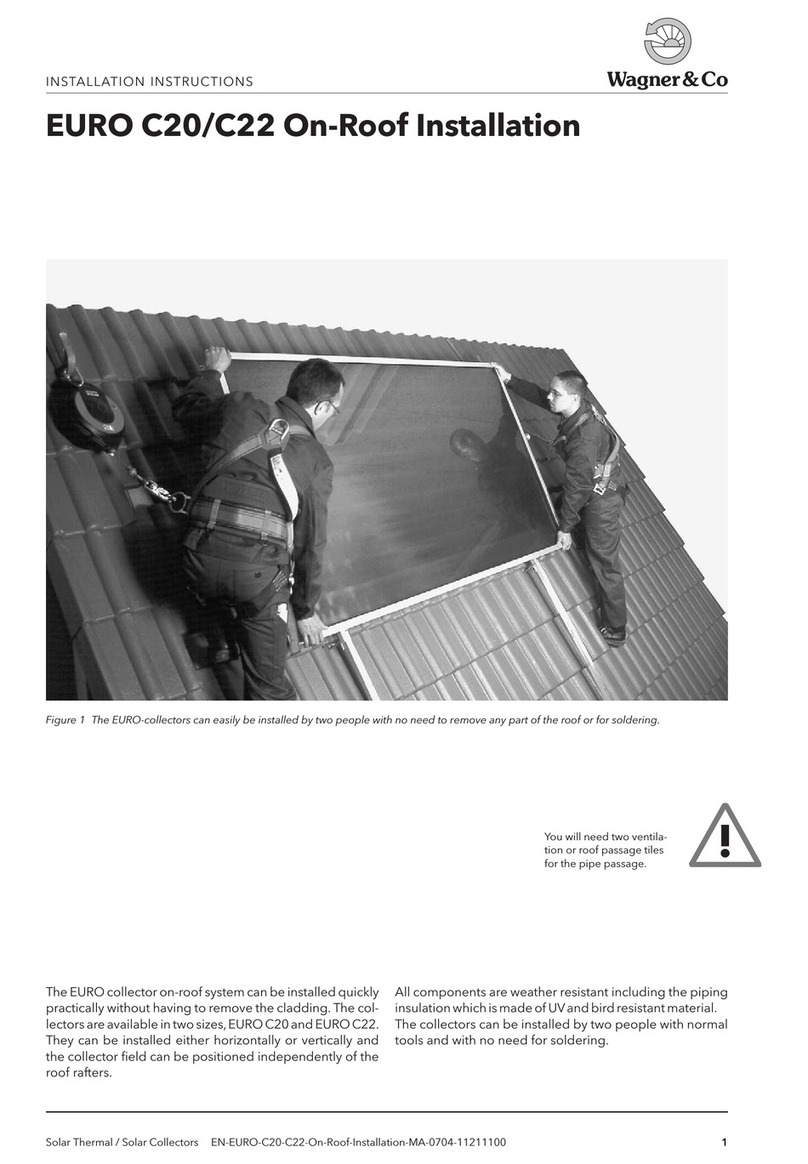
Wagner & Co
Wagner & Co EURO C22 installation instructions

Uniteck
Uniteck UNISUN MS manual
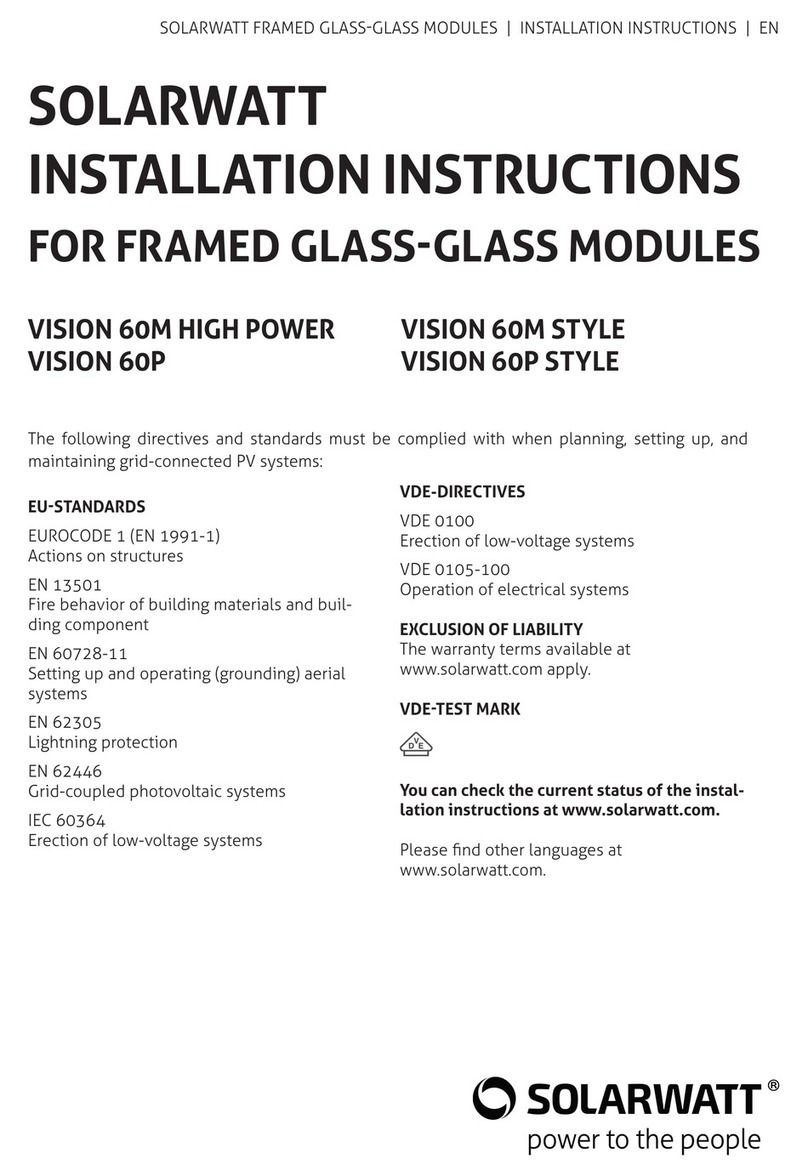
solarwatt
solarwatt Vision 60M high power installation instructions

Furrion
Furrion FURRIONNET-ZERO FSFP16MW-BL user manual
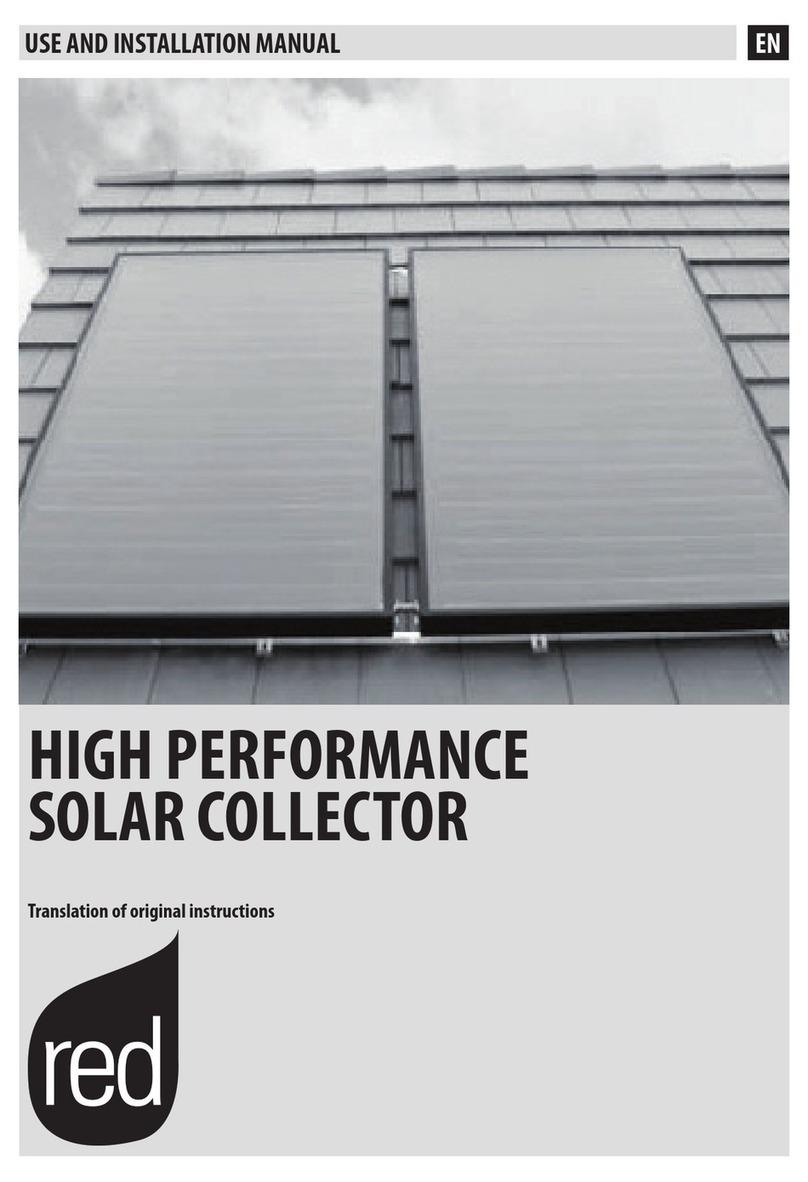
RED
RED HIGH PERFORMANCE SOLAR COLLECTOR TRANSLATION OF ORIGINAL INSTRUCTIONS
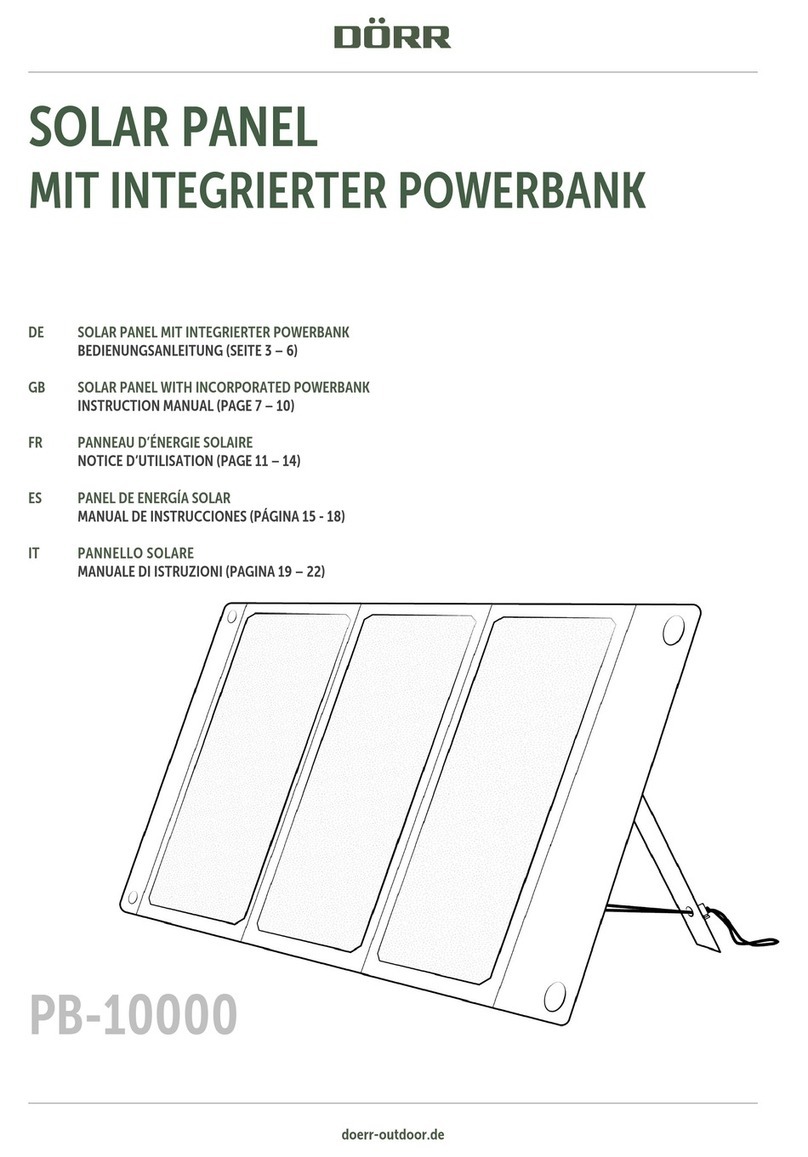
DÖRR
DÖRR PB-10000 instruction manual
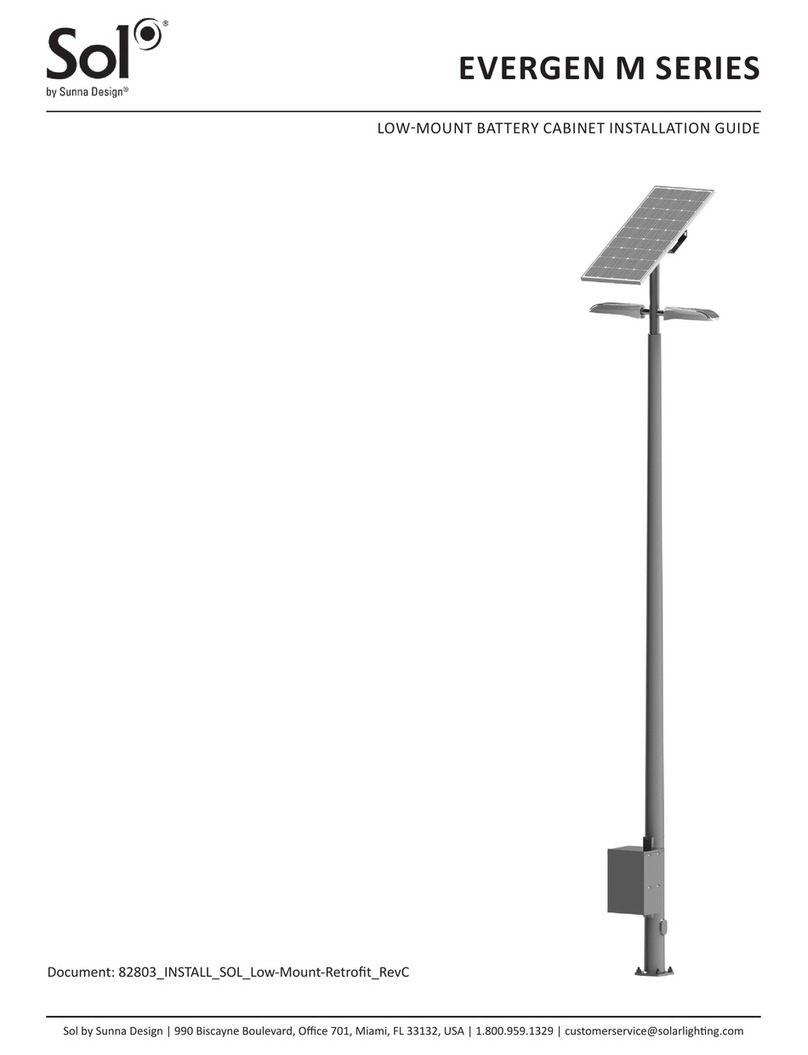
Sunna Design
Sunna Design Sol EVERGEN M Series installation guide
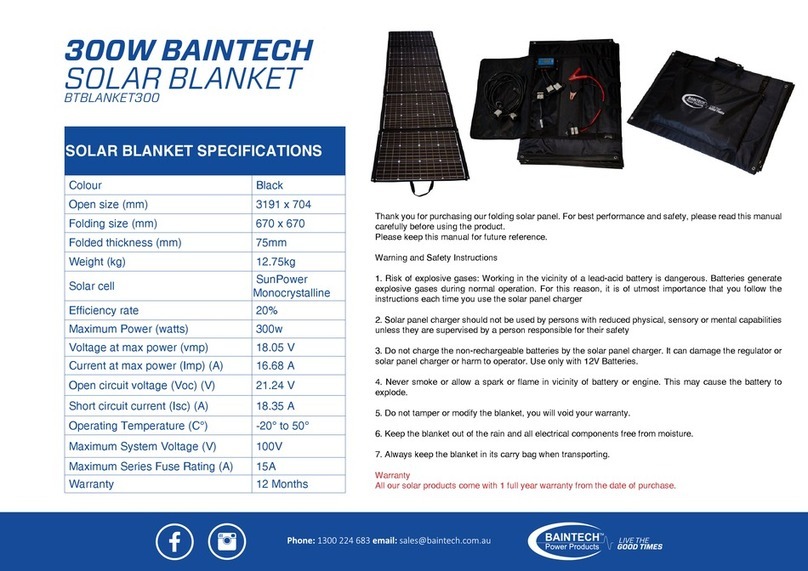
Baintech
Baintech BTBLANKET300 user guide
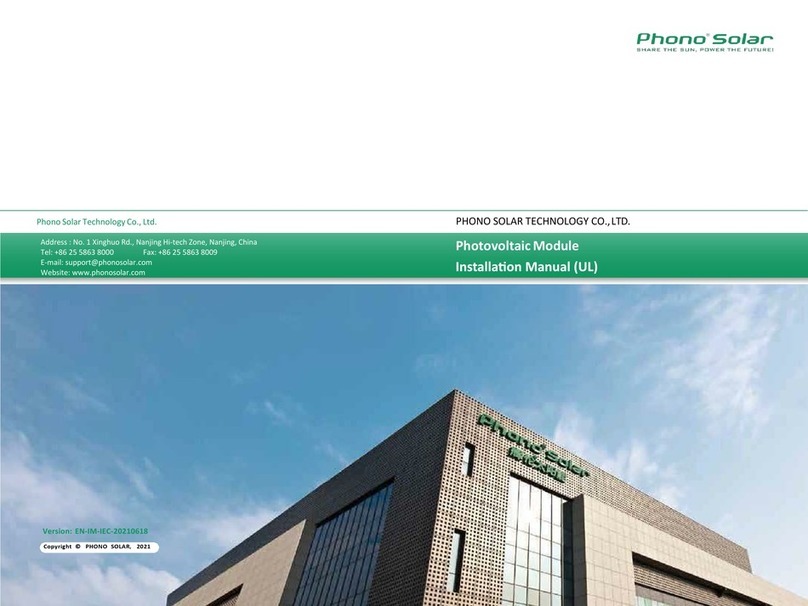
Phono Solar
Phono Solar PS M4H-20/UH Series installation manual

BayWa
BayWa closed II installation manual
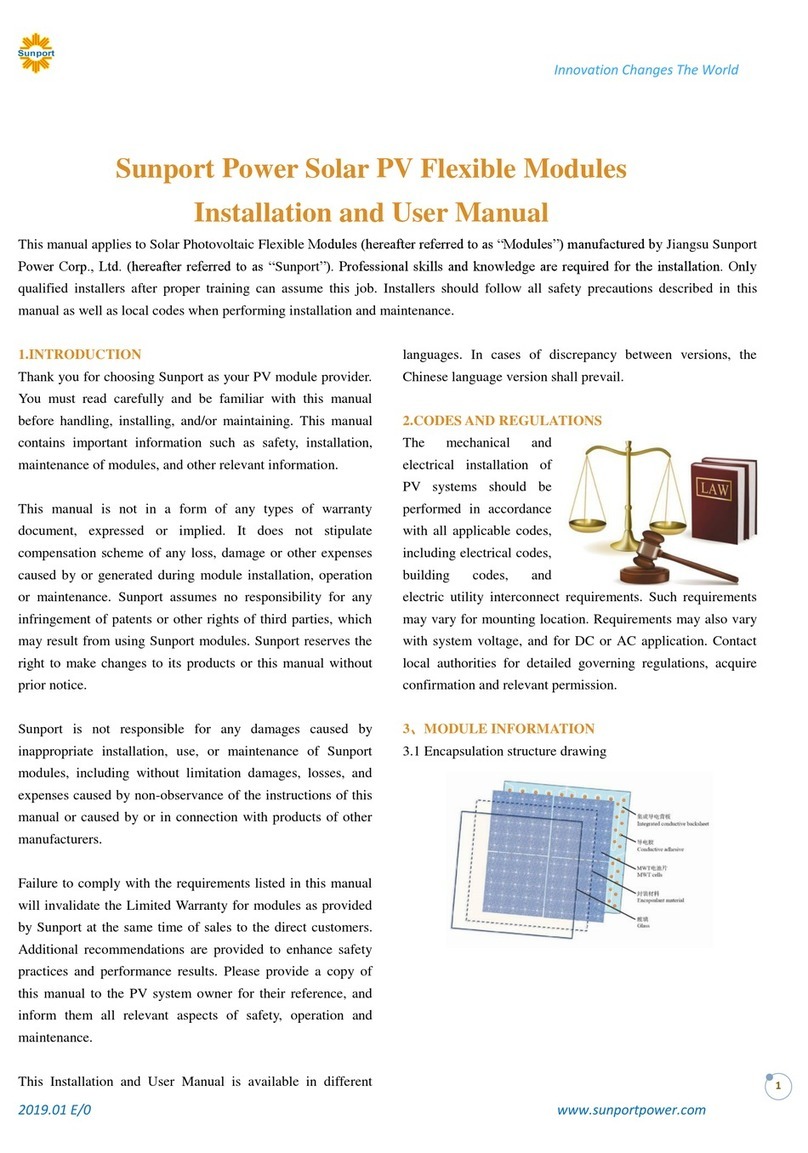
Sunport
Sunport SPP M60S Series Installation and user manual

LG
LG LGXXXN1CW-G4 Series installation manual
